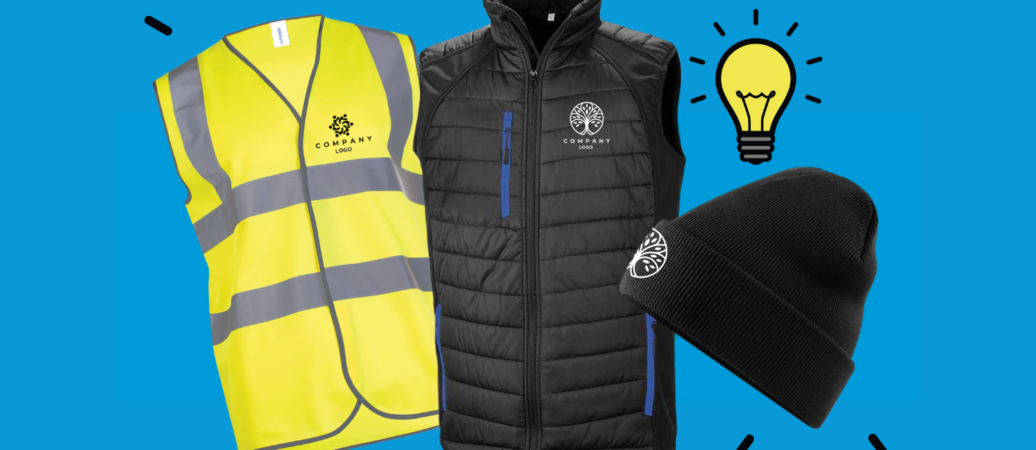A Guide to Choosing Weather-Appropriate Branded Clothing Materials
A Guide to Choosing Weather-Appropriate Branded Clothing Materials
Blog Article
Recognizing Clothes: The Importance of Fabric Selections in Your Wardrobe
The option of material in clothing plays a critical role in both appearances and capability. Various materials offer varying levels of breathability, convenience, and resilience, directly affecting the user's experience. Comprehending these subtleties can enhance one's wardrobe significantly. Lots of overlook how these choices can affect not just personal style, but also sustainability. What fabric decisions could redefine your wardrobe and straighten it with both design and responsibility?
The Duty of Fabric in vogue and Capability

Common Textile Types and Their Characteristics
When selecting garments, recognizing the features of common fabric kinds is important for making informed options. Cotton, a widely-used natural fiber, is known for its convenience, breathability, and soft qualities, making it ideal for sportswear and day-to-day garments. Bed linen, an additional all-natural alternative, flaunts superb moisture-wicking residential or commercial properties and an unique appearance, suitable for cozy climates.Wool, typically preferred for its warmth and resilience, varies in fineness; merino woollen is soft versus the skin, while coarser types are utilized for outerwear. Artificial fabrics like polyester and nylon use durability and resistance to wrinkles, making them prominent for activewear and travel garments. Finally, blends, which combine natural and synthetic fibers, can boost functionality while maintaining convenience. By acknowledging these material characteristics, individuals can choose clothes that aligns with their lifestyle and aesthetic preferences.
Breathability and Convenience: Selecting the Right Fabrics for Different Climates
Selecting the right materials for various climates can greatly improve comfort and total wearability. Breathable materials are necessary in hot environments, as they allow air circulation and dampness dissipation. Fabrics such as cotton, linen, and moisture-wicking synthetics properly attract sweat away from the body, maintaining the user cool and completely dry. On the other hand, in chillier environments, thicker fabrics like wool or fleece supply insulation while preserving breathability, ensuring warmth without overheating.Additionally, the choice of fabric weight plays an essential duty; light-weight materials are more effective for summer, whereas larger alternatives are suited for winter wear. Recognizing the one-of-a-kind homes of each textile makes it possible for people to clothe appropriately for differing weather problems. Eventually, choosing comfortable and breathable materials tailored to specific climates can substantially boost daily convenience and improve the overall experience of wearing apparel.
Durability and Care: Just How Textile Influences Durability of Your Wardrobe
Selecting the ideal products can greatly affect the durability and care needs of a wardrobe. Fabrics such as cotton and polyester are recognized for their resilience and simplicity of upkeep, making them perfect for daily wear. In comparison, delicate materials like silk and lace require more careful handling and specialized cleansing techniques, which can enhance the time and effort needed for care. Branded Clothing.Durability is additionally influenced by the material's weave and surface; securely woven textiles tend to stand up to deterioration better than loosely woven alternatives. Furthermore, synthetic blends usually supply improved toughness, integrating the most effective high qualities of numerous fibers.Understanding the care directions for every textile is vital, as incorrect washing or drying out can result in early wear. Eventually, choosing long lasting materials can lead to a longer-lasting closet, decreasing the frequency of replacements and adding to an extra lasting fashion selection
The Effect of Textile on Fit and Shape

Sustainable Material Options: Making Eco-Friendly Decisions
The effect of textile extends past fit and shape to incorporate ecological elements, prompting an expanding passion in sustainable textile selections. Green textiles, such as natural cotton, hemp, and Tencel, are obtaining traction among customers who focus on sustainability in their closets. These materials are usually created with less chemicals and water, lowering their ecological footprint.Additionally, recycled textiles, made from post-consumer waste, offer an innovative click this solution to the fabric industry's pollution issue. Brands significantly accept openness in their sourcing techniques, enabling customers to make educated decisions regarding their purchases.Choosing lasting textiles not only sustains honest techniques however likewise urges the fashion market to adopt more liable manufacturing methods. As recognition of environmental issues rises, people are advised to review the long-term effect of their material choices, cultivating an activity in the direction of a more eco mindful and sustainable method to style.
Elevating Design: Just How Textile Can Transform an Outfit
While lots of might concentrate on shade and cut when selecting an attire, the choice of textile plays an important role in elevating design and enhancing general look. Various products convey distinct state of minds and messages; for instance, silk exhibits luxury and class, while jeans offers a laid-back, loosened up vibe. The structure and drape of a material can considerably change the silhouette, with structured fabrics providing a refined look and softer ones creating a much more fluid, loosened up aesthetic.Moreover, the weight of the fabric affects wearability across periods. Lightweight textiles More Info like bed linen and cotton are optimal for summer, while heavier materials such as woollen and velour offer warmth and beauty in chillier months. Understanding material residential properties, such as breathability and stretch, likewise equips people to make educated selections that boost convenience without endangering design. Inevitably, the best fabric can change a clothing from average to amazing, making it an essential consideration in any closet.
Frequently Asked Questions
How Do I Identify the Fabric Material of My Clothing?
To recognize material material, one can take a look at treatment labels, conduct shed tests for fiber recognition, or seek advice from textile examples. These approaches assist differentiate materials, making certain notified selections for garments care and upkeep in daily wear.
Can Textile Option Affect My State Of Mind or Confidence?
Fabric choice can substantially impact a person's mood and confidence. Branded Clothing. Specific materials may evoke sensations of convenience or beauty, while others can really feel restrictive or uncomplimentary, ultimately affecting self-perception and psychological health throughout the day
What Fabrics Are Finest for Delicate Skin?
For individuals with delicate skin, natural materials like cotton, bamboo, and linen are typically suggested. These materials are breathable, hypoallergenic, and much less most likely to cause irritability, making them suitable options for convenience and skin health and wellness.
Exactly how Do I Properly Laundry and Look After Different Fabrics?
To appropriately care and clean for different textiles, one must take into consideration each product's details requirements, consisting of temperature level setups, cleaning agents, and drying approaches, making certain long life and maintaining the fabric's original qualities for excellent usage.
Exist Particular Fabrics for Athletic or Efficiency Put On?
Sports or performance wear often uses textiles such as spandex, polyester, and nylon. These materials are developed for moisture-wicking, breathability, and adaptability, boosting movement and comfort during physical tasks while offering toughness and support. On the other hand, in colder climates, thicker materials like wool or fleece offer insulation while maintaining breathability, ensuring heat without overheating.Additionally, the choice of fabric weight plays an important function; lightweight materials are better for summertime, whereas larger choices are suited for winter months wear. In comparison, fragile products like silk and shoelace need more careful handling and specialized cleansing methods, which can increase the time and effort required for care.Durability is additionally affected by the material's weave and surface; snugly woven textiles often tend to stand up to wear and tear much better than loosely woven alternatives. In comparison, rigid materials can restrict movement yet provide a timeless, polished look.Moreover, the thickness and texture of the textile can influence the visual understanding of body form. The influence of material extends past fit and shape to incorporate ecological factors, prompting an expanding interest in sustainable textile choices. The appearance and drape of a fabric can drastically alter the her explanation silhouette, with organized textiles offering a refined look and softer ones developing a more fluid, unwinded aesthetic.Moreover, the weight of the material affects wearability throughout periods.
Report this page